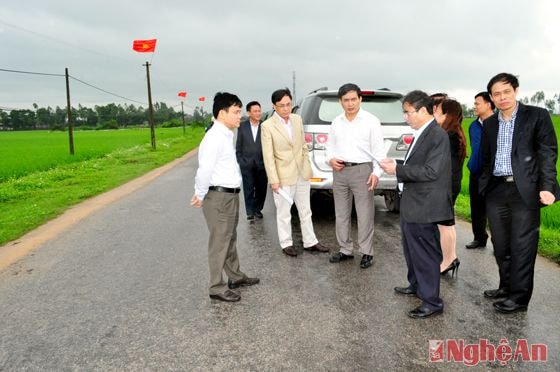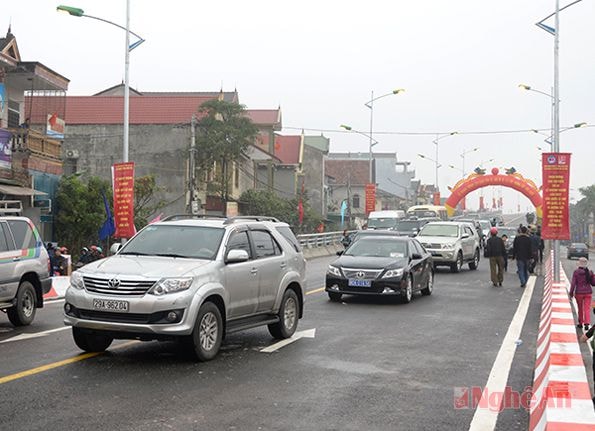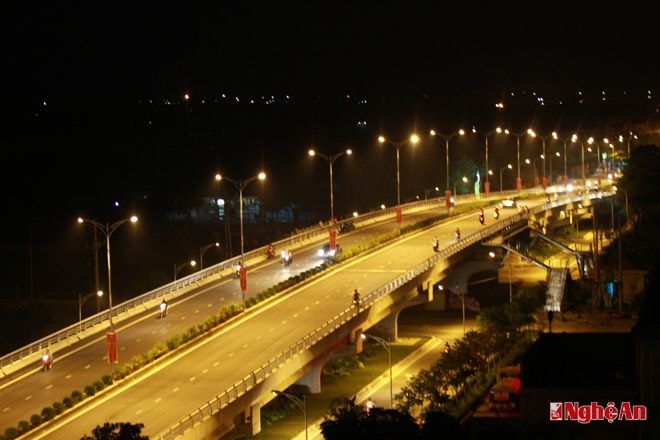Road maintenance fees: Personal obligation, community benefit
(Baonghean) - One of the questions that officials who work to promote people to pay road use fees often encounter is: What is this fee used for? To maintain and repair the traffic infrastructure system. What many people wonder about afterward is, where and how is this fund allocated? - a very natural question, because this is still a new type of fee that has not really created trust in the people.
(Baonghean) - One of the questions that officials who work to promote people to pay road use fees often encounter is: What is this fee used for? To maintain and repair the traffic infrastructure system. What many people wonder about afterward is, where and how is this fund allocated? - a very natural question, because this is still a new type of fee that has not really created trust in the people.
| RELATED NEWS |
|---|
Need to enhance autonomy in collecting road maintenance fees
 |
| The Provincial People's Council supervises the use of road maintenance funds to upgrade some sections on Provincial Road 534. |
In theory, previously, 100% of road toll revenue would be paid into the provincial road maintenance fund, from which it would be allocated to maintenance, repair and upgrading projects when proposed by the locality and appraised and approved by the fund. Starting from 2015, according to Decree 56/2014/ND-CP, there will be allocation depending on each locality. Specifically, in Nghe An, 60% of road toll revenue will be paid to the provincial budget to serve traffic works under the national new rural program, 40% will be paid to the road maintenance fund for the same purpose as before.
The method of using and coordinating the fund remains the same as before. In the condition of limited fund sources, the priority for projects submitted by localities will be to prioritize items with severe damage and high usage value to ensure traffic and safety for people. In addition, completing the collection of road use fees is also one of the criteria for considering the priority order of capital allocation, but this is only a relative criterion because in particularly difficult districts, the collection of fees is limited but the traffic needs are very urgent, especially during the season of natural disasters and floods.
 |
| Quan Banh overpass opens to traffic. (Photo by Sy Minh) |
There are two things that need to be properly understood about the use of the road maintenance fund. Firstly, the fund source is limited, especially considering the results of road toll collection in the whole province in 2013 and 2014, the revenue has not reached the estimated target, so meeting 100% of the needs for maintenance and repair of traffic infrastructure in the whole province is very difficult to achieve. With the mechanism of prioritizing urgent construction projects that need to be repaired, it is understandable that some localities, although doing a good job of collecting road tolls, still have some roads that have not been upgraded or renovated. Secondly, also because of the above coordination mechanism, the allocated fund source may be higher than the revenue that localities pay to the fund.
For example, in Nam Dan, there were two routes that were maintained, repaired and upgraded in 2014: Xo Viet route through Kim Lien commune (with maintenance fund allocated 8 billion VND) and Le Hong Son route (nearly 5.3 billion VND). Meanwhile, the total revenue from road use fees of Nam Dan district was 8.665 billion VND. In Yen Thanh, 2.8 billion VND was paid to the fund and nearly 5 billion VND was received to repair Khua route and route 22 from provincial road 538 to the Martyrs' Cemetery.
 |
| Cua Nam overpass (Vinh City) at night. Photo: Tran Hai |
Appropriate mechanisms are needed:
So, how to make the effective use of road maintenance funds more intuitive, closer to the people in the locality, thereby raising awareness and responsibility for road use and maintenance? Considering road toll collection results as a priority criterion in fund allocation is correct, but has not yet achieved high encouraging results. One of the proposals shared by many localities is the desire to allocate a part of the toll revenue to the budget directly managed by the locality, and autonomously use it for the purpose of maintaining the traffic system at the hamlet and commune levels.
Should a fund allocation rate be applied corresponding to the rate of completion of the budget target? This will show local people the direct connection between obligations and rights: fulfilling obligations and responsibilities means deserving to enjoy legitimate and proportionate rights. Thus, the road maintenance fund can still be allocated to urgent projects, regardless of whether the locality performs well or not in collecting tolls, and the difference will be decided by the locality itself, autonomously, and coordinates its own funding sources. For particularly difficult areas, a separate priority mechanism can be applied.
The benefits from the above-mentioned fund decentralization mechanism not only encourage localities to perform well in collecting road fees, thereby creating momentum for the whole province to strive. Above all, this means enhancing autonomy and democracy at the grassroots level, so that the rights and obligations of the people are truly discussed - done - inspected by the people and of course the people benefit. Allocating a part of the revenue to the provincial budget to serve the new rural construction program and a part to the road maintenance fund is also a change, an opportunity for the grassroots level to promote autonomy and flexibility in mobilizing and integrating the use of different capital sources to build a comprehensive face for the homeland./.
Thuc Anh - Thanh Nga






